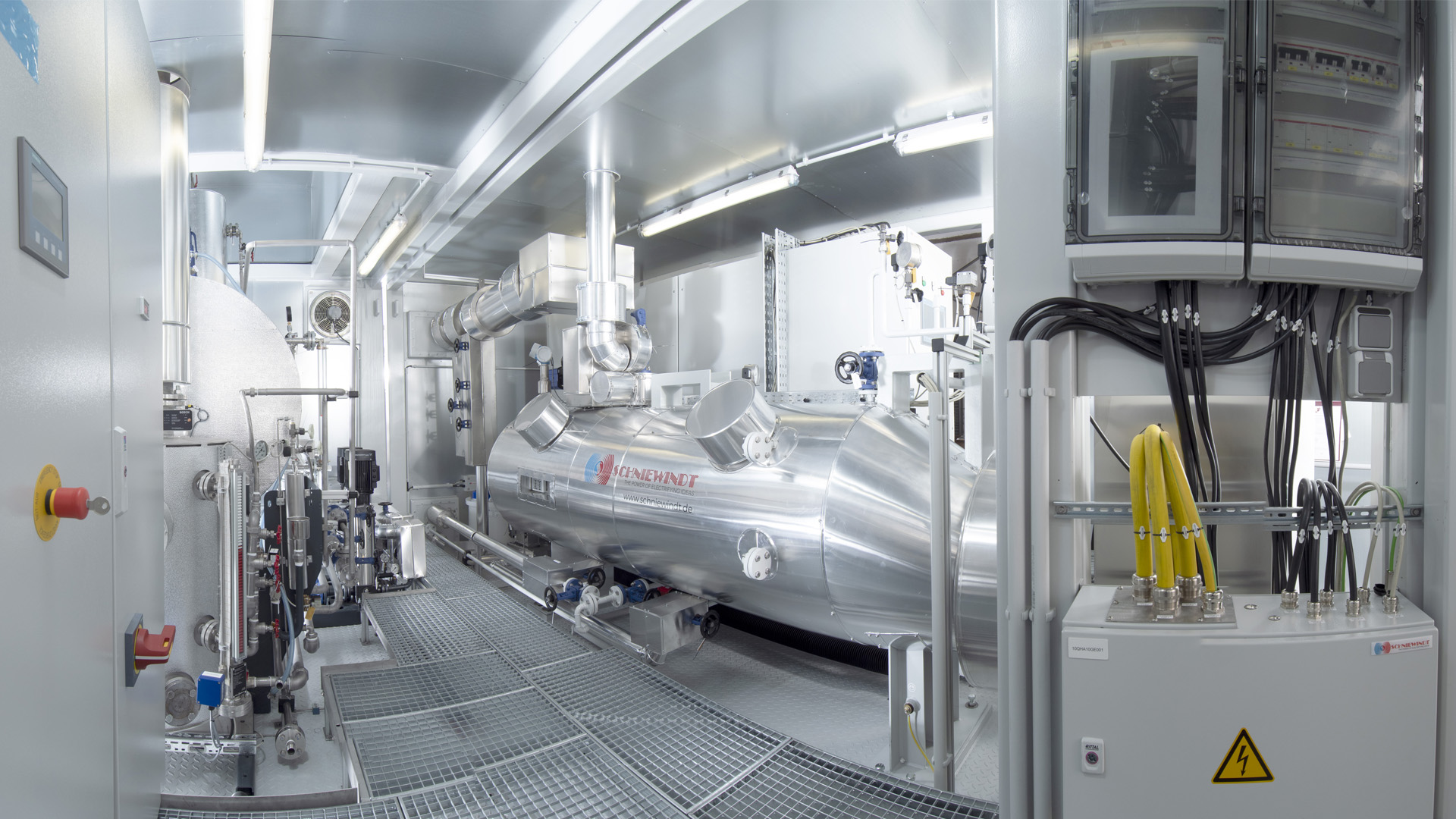
"The project is so far removed from anything that is standard. The requirements were so special," recalls Julian Müller, the responsible project manager at Schniewindt. A project made for Schniewindt: "Because we start exactly where our competitors' standard solutions end."
The Haru Oni project is a pilot plant for the climate-neutral production of e-fuels in Chile, near the city of Punta Arenas. One of the windiest regions in the world.
The idea is to produce e-fuels from hydrogen obtained from the electrolysis of desalinated seawater andCO2 extracted from the atmosphere. The energy required is supplied by a wind turbine.
The so-called direct air capture process bindsCO2 from the air in a ceramic filter that works in a similar way to catalytic converters used in cars. The chemicals in the flow channels bind theCO2. Water vapour is required to release the gas for further processing. It is synthesised with the hydrogen to form methanol, the basic material for e-fuels.
Schniewindt has designed, built and supplied a powerful, compact electrical system for generating steam to produce the water vapour.
The centrepiece of the system is the actual steam boiler, equipped with an electric Schniewindt flange heater with an output of 850 kW. The control technology of the switchgear allows any desired operating point to be reached quickly and flexibly - depending on the steam requirements of the downstream plant components.
The water quality system supplies demineralised, purified and degassed water. This is important to prevent the system from corroding. The water is purified in the feed water boiler "close to boiling point". Schniewindt purchased this as a standard part from a well-known supplier - because Schniewindt does not reinvent the wheel when it comes to standard parts - and fitted it with an in-house flange heater - because Schniewindt favours its own products wherever possible.
The auxiliary systems are important to ensure that the double container in which the system is housed offers good working conditions for the operating personnel on site: Lighting, air conditioning, drainage and, of course, heating in the form of a finned tube heater - from Schniewindt, of course. All equipment and systems in the double container are accessible via a service corridor.
"Our task was to design and build a 'plug and play' system: Unload the container, push it together, remove the partition walls, connect the power and water, done. And we succeeded," says Julian Müller. After successful pressure and leak tests as well as an operating simulation, the Schniewindt containers reached the ship to South America on time in spring 2022.
Schniewindt Managing Director Dr Sara Schniewindt is particularly proud that the steam generator is being used in Haru Oni, a plant that is helping to reduce global CO2 emissions.
Tagesschau report from 02.03.2021
Project page from Siemens Energy
Report on come-on.de